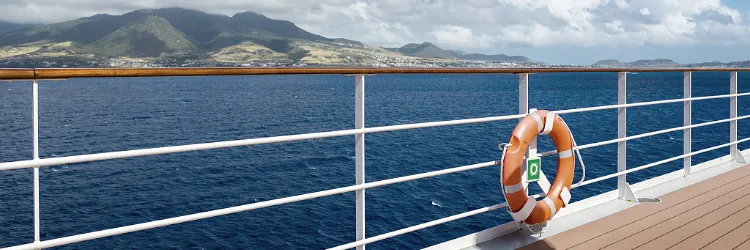
Guernsey-based Sovereign Pension Services (CI) Limited is compiling a series of articles exploring how globalisation and the changing employment market is impacting different sectors and employers.
This issue looks at the Maritime Sector and explores how seafarers can handle saving for their future whilst working at sea and not paying into a local pension. It will also explain how employers can deliver on their duty of care to employees and attract and retain good quality personnel in a competitive market.
There are three main categories of professional seafarer:
- Merchant – the largest sector in the maritime industry, including bulk carriers, tankers, container ships, ferries, cable layers, supply vessels and general-purpose cargo ships.
- Cruise – a complex market due to the large size of cruise vessels and the greater diversity and division of labour.
- Yachting – catering to luxury yacht owners and charter clients.
The International Chamber of Shipping Seafarer Workforce report 2021, prepared by the Baltic and International Maritime Council (BIMCO) and the International Chamber of Shipping (ICS) –two of the largest international shipping associations representing shipowners – estimated that there were 1.89 million seafarers serving the world merchant fleet, operating over 74,000 vessels around the globe.
But it warned that the industry had to significantly increase training and recruitment levels if it was to avoid a serious shortage in the total supply of officers by 2026. While diversity was also growing within the sector, with a 45.8% increase of women seafarers since 2015, that still only represented 1.28% of global workforce.
The cruise ship industry continues to grow. The larger ships have about one crew member to every 2.25 passengers, with the ratio closer to one-to-one on luxury lines. According to the Cruise Lines International Association, the industry expects to board some 36 million paying passengers in 2024, 20% more than in 2019.
Between 2025 and 2028, more than 25 ocean-going cruise ships are on order across the global cruise industry, of which 10 will have a double occupancy guest capacity of more than 4,000. With so many ships due to be launched, and of such scale, keeping these ships populated and delivering good service in such a competitive environment will be a challenge.
Although the yachting sector is much smaller, the Expert Vagabond website estimates there are up to 37,000 crew members employed across more than 6,000 superyachts alone, a figure that doesn’t include the many smaller yachts with professional crews.
Maritime Labour Convention (MLC)
Hailed as the seafarers’ bill of rights when it came into force in 2013, the Maritime Labour Convention (MLC) set out for the first time the minimum requirements for how seafarers should be treated. It was introduced in recognition that the global nature of the shipping industry meant that seafarers needed special protection, especially since they are often exempted from national onshore labour laws.
The MLC applies to all commercial seagoing ships operating in international waters or between ports of different countries except fishing, naval and traditionally built vessels. The MLC covers any seafarer who is employed, engaged or working in any capacity on board one of these vessels.
It gives seafarers the right to a safe and secure workplace – where safety standards are complied with and where they have fair terms of employment, decent living and working conditions, including social protection such as access to medical care, health protection and welfare.
The MLC has certainly had an impact on the welfare of seafarers, but the real driver for increased employee benefits, such as insurance and pensions, has been the recruitment issues and competition for staff.
Pensions and Savings Provision for Seafarers
The challenge for employers within the merchant and cruise sectors is that their employees have diverse skills, responsibilities, salaries and nationalities, with many unskilled and relatively low paid roles. It is difficult to find pensions or savings providers willing to take on these numbers and anticipated cash inflows.
By its very nature, seafaring is a highly mobile occupations and crews are distributed all over the globe on a myriad of different fleets and different vessels, both great and small. In addition, seafarers typically work in shift patterns, with nine months at sea and three months off per year, and employers often want to pay benefits only while they are at sea. The difficulty is how to manage that level of administration efficiently given the size and spread of employee populations.
Crews can live relatively cheaply while at sea, so it is a great opportunity to save. In some cases, particularly in the yachting and cruise sectors, they can also get expect to receive good bonuses and tips. So, it’s important that they make the most of their situation and put money aside.
Excellence is expected from this affluent client base, so owners have to work hard to keep the right experience and expertise onboard. The new generations of employee coming into the maritime workforce are more demanding in their expectations and are willing to move employers to find what they want.
To meet the challenge of attracting and retaining the right levels and calibre of staff to ensure good delivery of service, employers must evolve. Fortunately, digital innovations, such as Application Programming Interfaces (APIs) that permit the swift and easy transfer of data for employers and real-time portal access for scheme members, mean that pension schemes are now easier to implement and administer. It also means that the plans are fully transparent in terms of information and fees for both employers and employees.
A professional pensions’ provider such as Sovereign can establish an occupational international pension and savings plan that is cost-effective and attractive for any numbers and any level of activity. It is flexible enough that the level of benefits can vary by population. It enables employers to deliver on their duty of care to all crew members and will help to instil reciprocal loyalty and commitment.
A trust-based occupational pension scheme will ensure the legal separation of the plan’s assets from those of the sponsoring employer. This provides an additional layer of comfort to employees because it protects the plan’s funds both from the employer and any party seeking to lay claim to the assets of the business.
An international pension and savings plan also provides employees, many of whom may not generally have access to investing in hard currency, with an opportunity to save easily from payroll with no minimum contribution level and at no additional cost for medium to long term life events.
A plan can easily be structured so that it:
- Pays an employer contribution that the seafarer can access when either they retire or leave the company.
- Ties the ownership of the employer’s contribution, through a vesting schedule, to a specified length of service before the seafarer has rights to it
- Provides a savings element to enable seafarers to save easily, with no minimum amount and penalty-free from payroll for life events such as a house purchase, wedding, children’s education or retirement.
There is an added advantage for crewing companies. Their employees can move around different vessels or yachts while remaining within the same plan. This provides consistency and consolidated benefits for the employees and assists crewing companies to retain seafarers who want a long-term career.
Sovereign’s international pensions and savings plans are a highly effective way to address the staff recruitment and retention issues within the maritime sector. To better understand their potential impact on your business, please look at our Maritime case study at International Solutions – The Sovereign Group
For further information or to get the process underway, contact Jo Smeed below.
